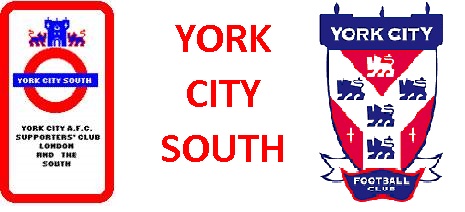

York City: Reserve and Junior Football
Since formation, City have generally fielded a reserve side, some seasons, even 2 sides. In 1968, City first fielded a youth team. Whilst the overarching aim of both reserve and youth football is to provide players for the first team, in recent years, selling young players has contributed to City's very survival. Disappointingly, few have prospered in the first team in recent years.
At times, especially in the early years, the teams were supplemented with local, non contracted, players, at both reserve and youth level to make up numbers. Given this, it has sometimes been difficult for teams to gell, sometimes they only meeting in the dressing room before matches. Indeed, between scoring hat tricks for the intermediates in 1987, Iain Dunn missed other games due to "local commitments".
York City's Reserve Side - The History
The current York City Football Club was founded in April 1922 and entered a side in the Midland League in the 1922/3 season. The first 2 seasons saw the league consist of a mix of non league / amateur clubs alongside several reserve sides from establihed Football League clubs. In 1924, the FL reserve sides withdrew and formed their own league, the Midland Combination. The following season (1923/4), a reserve side was formed and they played in The Yorkshire League as well as competing in local competitions. In 1931, the reserves moved to The Midland League, it was a wider geographical spread and again included games against reserve sides of league clubs. For the 1934/5 season, for financial reasons, the reserves reverted to The Yorkshire League where they remained until re-joining The Midland League in 1947. There is also evidence of an earlier York City reserve side joining The Yorkshire Combination League in 1912/3.
In 1938, as the first team reached Round 6 of the FA Cup, the reserves lifted the Yorkshire League Championship, eclipsing 1931 and 1937 when they were runners up (1937 on goal average).
With regional football ending in 1958, reserve team football also underwent a re-vamp. City’s reserves entered the new North Regional League. It was essentially reserve team football for the lower league clubs whilst the north’s bigger clubs’ reserve sides entered The Central League. City remained here until 1966 when reverting to the Yorkshire League (Division 2), gaining promotion in the first season, followed by immediate relegation in the next season (1967/8). In summer 1968, the reserve side was scrapped and an intermediate (Youth, under 18) side entered the Northern Intermediate League. In 1969, the reserve side was re-instated, meaning for the first time since 1955 did City field 3 teams.
In August 1984, City joined the Central League, completing in Division 2. At the time it covered the north of England and was the highest level of reserve team football. Later, the side was to enjoy one season in the top flight. The Southern Combination was the equivalent league in the south.
In 2009, Martin Foyle disbanded City's reserve team due to financial constraints during the first non league era. It was not re-instated until 2016 under Jackie McNamara. Sadly, the demise of the reserve team appeared to open a chasm between youth and first team.
Graeme Murty, speaking on York Hospital Ball in July 2024 noted how as a young player, he learnt so much from playing alongside senior professionals, the likes Paul Stancliffe, Nigel Pepper and Tony Canham in reserve team matches. They provided a bridge from youth to senior football, seeing how the older players conducted themselves and coming up against elder statesmen from other clubs, a much different experience from coming up against callow youths from other clubs. Equally in his day, with much smaller squad sizes, City's young players regularly trained with the first team, taking an active part in sessions, helping them to understand how the senior players operated and helping them to understand what they needed to do to reach those standards whilst remembering to "listen to what they (the older players) say, not how they say it".
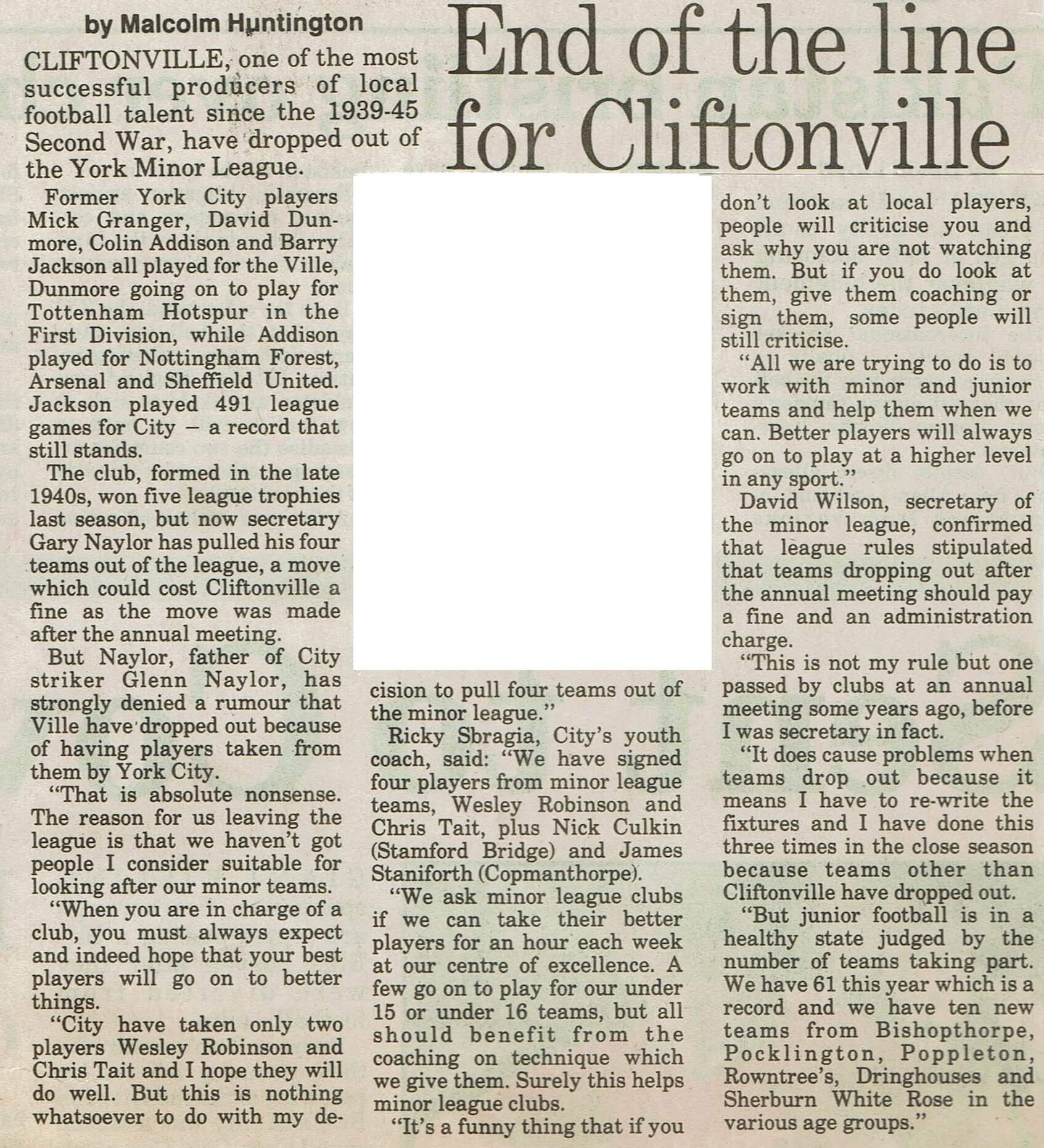
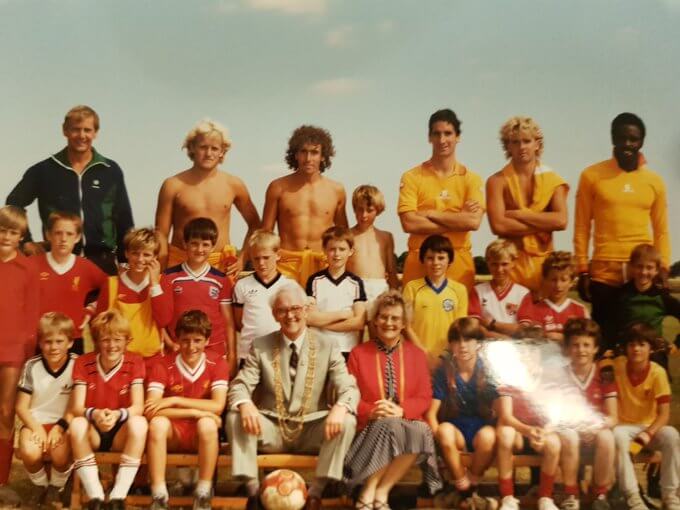
York City's Reserve Side - Season By Season
Season | Notes |
1922/3 | No reserve side |
1923-31 | Yorkshire League. Some fixtures were not played, for example, in the 1927/8 season, both games against Methley Perseverance were postponed and not re-scheduled. In 1930/1, City finished runners up. |
1931-34 | Midland League. Resign due to high travelling costs |
1934-39 | Yorkshire League |
1945/6 | Resume in Yorkshire League |
1946/7 | Win Yorkshire League's League Cup with a 4-0 win over Leeds United "A" at Boothferry Park (Hull). |
1947/8 | Revert to Midland League |
1948/9 | Top 6 in Midland League, scoring over 100 goals |
1949-51 | First time a 3rd team entered in Yorkshire League. |
1951/2 |
|
1952/3 |
|
1953/4 |
|
1954/5 | Midland League. |
1955/6 | Midland League. 24 teams |
1956/7 | Reserves finish in Top 5 |
1957/8 | ML – 24 teams – Undefeated (W17 D6 L0 F61 A24), the first time a City side had been undefeated throughout a season |
1958/9 | North Regional League - 20 teams (FL reserve sides Workington, Carlisle, Port Vale, Gateshead, Grimsby, Sunderland, Middlesbrough) – Upper mid table |
1959/60 | NRL 22 teams Upper mid table |
1960/1 | NRL 21 (Gateshead dropped out) – Bottom 6 all season. Tait top score and Boyes (D) made the most appearances (34 of 40 games)
|
1961/2 |
|
1962/3 | North Regional League – 17 teams, FL reserve teams. |
1963/4 | North Regional League – 17 teams, FL reserve teams. Another season of struggles |
1964/5 | North Regional League. |
1965/6 | North Regional League. Leave at end of season. |
1966/7 | Yorkshire League (Division 2). 16 team Yorkshire based league, including Bradford City, Doncaster Rovers and other traditional non league teams. |
1967/8 | Yorkshire League (Division 1). 17 team Yorkshire based league, with City as the only FL club. |
1968/9 | Intention was to enter the North Midlands League |
1969/70 | Enter North Midlands League |
1970/1 | NML |
1971/2 | NML |
1972/3 | NML |
1973/4 | NML |
1974/5 | NML |
1975/6 | NML |
1976/7 | NML |
1977/8 | NML |
1978/9 | NML |
1979/80 |
|
1980/1 | NML |
1981/2 | NML |
1982/3 | NML |
1983/4 | No reserve league, just friendlies as NML folded (see above) |
1984/5 | Central League (Division 2) - 18 teams, including Leeds, Middlesbrough, Leicester and other lower FL teams |
1985/6 | Central League (Division 2) - 18 teams |
1986/7 | Central League (Division 2) - Originally 18 teams (but Wolves withdraw) |
1987/8 | Central League (Division 2) - 18 teams |
1988/9 | Central League (Division 2) - 18 teams |
1989/90 |
|
1990/1 |
|
1991/2 |
|
1992/3 | Reserves promoted to Pontins Division 1. Finish 4th with 59 points (P34 W17 D8 L9), over 20 points behind Derby. 2nd Everton, 3rd Coventry |
1993/4 |
|
1994/5 |
|
1995/6 | City in 2nd division of 3. |
1996/7 | Pontins League revamped with 4 divisions (Premier, D1,D2, D3), re-organisation sees City drop into Tier 3 (13 teams in the division). Upper mid table finish in Pontins Division 2 (3rd tier) after leading the table after 11 games |
1997/8 | Mid table (7th out of 13) in D2 (Tier 3) |
1998/9 | Mid table |
1999/2000 |
|
2000/1 |
|
2001/2 |
|
2002/3 |
|
2003/4 |
|
2004/5 |
|
2005/6 |
|
2006/7 |
|
2007/8 |
|
2008/9 | Last season of reserve team football. The season included a game against a strong Leeds side. Subsequently, Leeds were to use Bootham Crescent for home games until problems with the waterlogged pitch. |
2009/10 |
|
2010/1 |
|
2011/2 |
|
2012/3 |
|
2013/4 |
|
2014/5 |
|
2015/6 |
|
2016/7 | Reserve team reformed |
2017/8 |
|
2018/9 | Withdraw from reserve team league football, youth set up re-constituted as U19 (was U18) |
For many years, City have fielded a side in The North Riding Senior Cup, historically a reserve side, but sometimes a full first team have has been fielded, increasingly the side has been padded out with youth team players. For details see York City in the NRSC.
York City Youth - The Early Years
Despite not being considered a "hotbed" of football, as long as there has been a York City, there has been a string of local youngsters who have made the grade at Football League level, many making their debut with York City before going onto enjoy successful football careers. Indeed, of the 5 players who have made the most appearances for City, 3 (Barry Jackson, Chris Topping and Gary Ford) are locally born, whilst the other 2 both made their Football League debuts for City. Equally, home grown players have provided a rich source of transfer income for City, in the club's history, well over half of all City's transfer income has been from selling home grown youngsters.
Early examples of locally born youngsters playing for City included Jack Pinder (Read More), an England Schoolboy captain who played 229 games for City, Reg Stockill (City’s youngest ever player and scorer), Alf Patrick, George Lee, Reg Baines and the 4 Kay brothers, albeit they only played 8 games in total for City in the pre 1929 non league era.
At the time, with a thriving local football scene, many played were drafted in to play for City, most making only a handful of appearances. On a national level, in 1928 York reached the semi finals of the English Schoolboys’ Shield, losing 3-1 to Brighton at Fulfordgate in front of an 8,813 crowd. 3 of the City side, Jack Pinder, Reg Stockill and Dave Halford went onto have professional careers.
In the early years, many talented youngsters fell by the wayside, but a fair few went on to have successful professional careers, both with City and at level much higher than City.
York City's Youth Side Whilst young players had always progressed to the first team, it was 1968 when a scheme for apprentice professionals first appeared. City formed an Under 18 side and entered The Northern Intermediate League. City struck lucky as Chris Topping was City’s first apprentice professional. He was soon in the first team and was scouted by several clubs including Arsenal who sent their scout George Male to watch him as they sought a replacement for Ian Ure as they built what was to be their 1971 double winning side. Over the years, the youth system produced a number of players who went onto be prominent first team players, including Brian Pollard, Cliff Calvert and John Byrne in the first 10 years.
With a 3pm Saturday kick off at Bootham Crescent, the first game resulted in a 4-2 win over Sheffied Wednesday in front of a bigger than expected crowd and the team's next home game saw 484 (£41.15p) spectators witness a 2-0 win over Grimsby. Those crowds were upon the previous season's reserve team crowds when the average was 185 (£8.09p).
Septemeber 1969 saw City's FA Youth Cup debut and a 2-0 home defeat to Bradford City.
John Byrne recalled playing park football in Manchester when a local taxi driver, Mike Walker, a friend of Wilf McGuinness, approached him and offered him a route into professional football. A trial at Bolton went nowhere, but after playing games for City's boys at the age of 14 and 15, he signed schoolboy forms in February 1976, the very day that City lost 7-2 at Brighton. In those days he was known as "bottle of milk" due to his pale complexion and slim line physique. In 1979, Sports Council funding allowed City to rejuvanate the youth set up. Gareth Powell, a university graduate from Cardiff was appointed Head Of Youth, but unable to settle in York, he resigned and Barry Lyons was appointed in June 1979.
After a fallow period, the 1990s, under Ricky Sbragia, were a golden period. Graeme Murty, Jon Greening (just prior to his move, he'd attended a 4 day trial at Manchester United and reports sugested that he'd turned down similar with Spurs (YEP, 980316) and Richard Cresswell who graduated and earned City massive transfer fees. Subsequently, another fallow period followed. For many years, the youth set up has relied on unsung (and often unpaid) volunteers working under the youth manager. After his retirement through injury, Ricky Sbragia has probably enjoyed most success as our Youth Team Manager. His side reached the quarter finals of the FA Youth Cup in 1993, losing 5-0 at Old Trafford (Goalscorers: G Neville, O'Kane, Savage, Irving, Beckham; Referee: Trevor West (Hull); Attendance: 4,937). He subsequently took up a similar role at Sunderland before progressing to manager. Later, he enjoyed 2 spells with Manchester United as reserve and Under 23 team manager.
One trait of City's youth set up has been fielding a side at the bottom of the age range, often one or 2 years younger than their opponents, the idea being to develop players against older opposition in readiness for progression to the professional ranks.
The Northern Intermediate League was based around Yorkshire, North East and Humberside clubs, its origins can be dated back to as early as 1947/8. Strangely, a Wolverhampton Wanderers side, based in Wath competed in the league (and Sheffield Amateur League) in the mid 1950s, presumably in an effort to tap into a wider talent pool. That club's roots can be traced back to Wath Wanderers, possibly football's first 'academy' club. Formed in 1938 by Mark Crook they trawled the north of the country for the best players to create a local superteam, with the best moving on to Wolverhampton Wanderers.
Prior to this, talented local youngsters had progressed through local non league football before joining York City. The 1950s was a golden era with the likes of Colin Addison, Mick Granger, David Dunmore and Barry Jackson all signing for City from local amateur football. Of the local clubs, Cliftonville were at the forefront and provided a number of talented youngsters.
Born within 2 months of each other in 1954, Brian Pollard (1971 and 1972), Mike de Placido (1972) and Cliff Calvert (1972) all played for England Youth and progressed through City’s youth intermediate side before making their City debuts. Pollard and de Placido on Good Friday 1972. Calvert followed soon after. Pollard and Calvert made names for themselves with City before enjoying top flight careers at Watford and Sheffield United respectively. Both earned City £30,000+ fees when they left us.
It wasn’t until 10 years later that home grown youth players made a real impression on City's first team when John Byrne and Gary Ford were key players in City’s 1984 Division 4 Championship winning team. City had to wait another 10 years for the next wave of youth, Graeme Murty, Richard Cresswell and Jon Greening. They netted a near £3m in transfer fees.
Subsequently, there has been a relative dearth of talent rising from the youth ranks to first team. Adam Boyes was the only junior City sold for money during the 2004-12 non league years. However, it must be noted that 2 youth graduates, David Stockdale and Byron Webster were released by City after short first team careers but have gone onto enjoy considerable success at clubs playing in leagues above City.
Equally, youngster Jamie Hopcutt was released by Gary Mills in 2010 after graduating through the youth ranks and signing a professional contract. Within months, with no reserve side, he was released. Subsequently he has enjoyed a successful career in Sweden with Ostersunds.
Between 1992 (after the completion of the Shipton Street Roof Appeal) and 2006, the Youth Development Fund (see below) supported City’s junior sides and junior supporters, raising over £300,000 before it was controversially wound up (link 1). Additionally, for many years, City's promising youngsters have been expected to contribute financially to their time with the club, in such ways as paying their own travel expenses, matchday expenses and general fundraising.
In November 1998, at a fans' forum, Keith Usher had noted the difficulties a club like City had holding onto their youth talent. In 1994, 14 year old Curtis Woodhouse moved to Sheffield United for a £2,000 compensation fee. His next move was to Birmingham for £1,000,000 (City got a £60,000 cut). Usher noted City had lost 6 other youth players including 2 who went to Nottingham Forest with City receiving just £7,000 in compensation. Subsequently, City profitted from the sales of Tom Allan, Ben Godfrey, Sam Fielding, Ryan Edmondson and Gabby McGill. An initial £200,000 fee was quoted for Ben Godfrey. It and subsequent sales appear to have been heavily weighted towards lucrative additional payment clauses as the players progress in the game. Earlier, in June 2016, City netted £40,000 in compensation when Under 14 striker Cole Kiernan moved to Sunderland. By 2018, 2 years after our relegation from The Football League, EPPP funding (worth £260,000 a year if City committed £130,000) and protection dried up, meaning any player under 17 could move on without City receiving any compensation. Vinnie Steels, in August 2018, being the first high profile example when he moved to Premier League Burnley. As the realities on National League North football took hold, for 2018/9, the youth set up was revamped. City dropped out of the EPPP programme and re-grouped (losing about £260,000 a year in funding). The youth set up moved to an Under 19 format, effectively giving first year professionals an extra season of football to bridge the gap between men and boys football.
For many years, City's young scholars have had to part fund their own participation in City's academy by various means. Parents often contributed directly or by arranging / supporting fund raising initiatives. It was reported in The Press that all parents of scholars were asked to try to raise £600 in sponsorship money during the 2018/19 campaign.
Even so, City's Academy continued to run sides from Under 19 to down to Under 9 level, albeit one rather than 2 coaches per age group, but involving 140 players. A professional ethos was maintained and new links built. In late 2019, links with York St John University were strengthened, links established with Yorkshire Academy Sport and arrangements made with the Supersonic Fitness gym in the city centre giving the Academy access to additional facilities and learning opportunities. In February 2020, coach Andy Snell noted how City's Under 19 captain, Archie Whitfield was coaching the Academy's Under 13 side and other of his teammates were doing coaching and refereeing badges. He also recalled Ben Godfrey's return to City's Academy at Under 15 level, sending him on as a sub for his debut and then taking him off 10 minutes later due to an ineffective start. Andy stated his aim was to improve the ratio of youngsters making it as a professional (currently he'd expect only 2 or 3 of the 140 to make the grade) and was recently delighted when Charlie Binns, ex City youth player, now a nutritionist at Birmingham University was put forward by them to do a lecture at City's Academy without the university realising he was an ex City player.
In total, youth player sales have netted City over £7.4m (as opposed to just £3.6m from all other sales). Just some of the players who have progressed through City's youth ranks and been sold on for a transfer fee (including the likes of training / development and compensation fees) include Ben Godfrey, Brian Pollard, Byron Webster, Cameron Stuart, Chris Hogg, Chris Topping, Cliff Calvert, Curtis Woodhouse, Darren Williams, Gabby McGill, Gary Ford, Graeme Murty, John Byrne, Jon Greening, Kiernan Cole, Lee Bullock, Lee Grant, Marco Gabbiadini, Nick Culkin, Ricardo Gabbiadini, Richard Cresswell, Russ Howarth, Ryan Edmondson, Sam Fielding, Scott Allison, Steve Bushell, Steve Senior and Tom Allen. But don’t forget there were others, released by City, who enjoyed successful careers,including Andy Warrington, David Stockdale, Gary Himsworth, Glenn Naylor, Iain Dunn, Jamie Hopcutt, Joe Neenan, Michael Duckworth and Paul Robinson (England keeper).
Footnote (1): One friend recalls he was training 2 nights a week with City as a young teenager in the early 1970s. It was a regular occurrence to see the coach call a player aside, take him into the dressing rooms, never to be seen again. My friend was hooked one evening as training finished and told his City career was over.
Footnote (2): In November 2019, on his England Under 21 call up, Ben Godfrey noted on Thefa.com, “I’m so glad I did it the way I have, it’s been an amazing journey. I wasn’t wrapped up in cotton wool, so it was a steep learning curve and I wouldn’t change my route at all. I didn’t have the academy upbringing that many did, but I also learnt things it would be impossible for them to do by getting the exposure to men’s football that I did at such a young age. You know that if you’re making mistakes, it can affect everyone in the dressing room so I saw how much it meant to the players and there’s one moment I can specifically remember. “We were in a relegation battle and we were away at Accrington Stanley on the back of a poor run of results and were in a bit of a trouble. There was talk of players possibly taking pay cuts and things like that, so it was really important but at the time, I was just happy to be there. “But after the game, and in the tiniest changing room as anyone who’s played at Accrington will know, a little bit of a fight erupted in there between two players. To me, at 16, it was an eye opener and that was when it clicked how important each and every point was. When I first went to Norwich, it was weird because in terms of experiences, I’d had much more than the other players at the time. In terms of technical ability, I was probably quite a bit behind because that wasn’t what we practised at the level I’d come from. So I was at a different stage mentally, and technically, to the other boys but I saw that I needed to work on my technical ability and catch up. But the other lads couldn’t go back and get that experience which I’d had at 16 and 17. They had to learn and experience all of those things that I did four years before them”.
Footnote (3): One that got away? Steve McClaren was a Nunthorpe Grammar School pupil before joining Hull City. At the school, David Fenton, son of Billy, was slightly older and had played for City youth and reserves, whilst slighty younger than them was Paul McGuinness, son of Wilf and later a long time Manchester United youth team coach. Across the City, Archbishop Holgates produced Brian Pollard (who starred in their rugby union side alongside Josh Easby). It is believed that the other 2 York grammar schools of that era produced no YCFC footballers.
York City's Youth Side - Season By Season
Season Notes 1968/9
1969/70 NIL The same 18 teams 1970/1 15 teams (Wolves, Grimsby, Bradford PA) drop out 1971/2 16 teams (Grimsby re-enter) 1972/3 16 teams 1973/4 17 teams (Lincoln added) 1974/5 17 teams 1975/6 16 teams (Bradford C dropped out) 1976/7 NIL 1977/8 NIL 1978/9 NIL 1979/80 NIL. Plus Colts team in York and District League 1980/1 NIL 1981/2 NIL 1982/3 NIL 1983/4 NIL 1984/5 NIL (15 teams) 1985/6 NIL (18 teams) 1986/7 NIL (18 teams) 1987/8 NIL (18 teams) 1988/9 NIL (18 teams) 1989/90 1990/1 City fielded a 3rd team, an Under 16 side in The Yorkshire Conference League under Barrie Tait. The team lasted just one season. 1991/2
1992/3
1993/4 1994/5
1995/6 New home base at York RI's ground on New Lane 1996/7 A disappointing season 1997/8 NIL. Mid table 1998/9
City's league had been renamed the North East Conference League and involved 12 teams. City achieved an upper table finish.
Of the 10 second year youth team apprentices, a record 5 get pro contracts (Bullock & Fox (2 years), Steve Walters & James Turley (one year) and Michael Dibie (6 months). 5 (Peter Batchelor, Thomas Dufton, Michael Farley, John Mohan and John Urwin) were released.
1999/2000 Win Football League Youth Alliance North East Conference. Successfully progress into the end of season Merit League (YEP 20000110) 2000/1 2001/2 2002/3 2003/4 2004/5 2005/6 2006/7 2007/8 2008/9 2009/10 The youth team that Graham Potter coached at York went on to finish as runners-up to Hull City in the 2009/10 Football League Youth Alliance north-east table. 2010/1 2011/2 2012/3 2013/4 2014/5 Andy McMillan was appointed Academy Manager on 23 May 2014, his reign lasted for 2 seasons. His youth side reached Round 1 of the FA Youth Cup. YCFC web site (25/Oct/2025) noted "The Minstermen have not surpassed the First Round stage of the FA Youth Cup since a 2014 tie with Crewe Alexandra". 2015/6 Andy McMillan was forced to re-apply for his job, he was successful but shortly afterwards, on 15 July 2016, he resigned. He stated on York Hospital Ball, that under his tenure, the academy's EPPP rating raised from 35% (not reaching minimum Cat 4 level) to 68% (2% of short of Cat 2, a full size indoor training pitch would have tipped the balance) and City sold players for over £500,000 (Godfrey (£275,000), Edmondson (£100,000), McGill, Fielding and Kiernan) having inherited a set up which had made no sales or seen players promoted to the first team for many years. Some of the sales occurred after he'd moved on. He attributed much of the good work in developing Godfrey to Jon Greening. 2016/7 City finish in fourth place (out of 13) in the Youth Alliance League North East table. Mansfield Town clinched the title 2017/8 McNaughton top scorer 2018/9 Move from Football League Alliance to National League U19 Alliance. City finished 2nd in section I with Ethan Henderson top scorer, Kiari Ventura a close second in goals scored. 2019/20 4th (out of 10) in the National League U19 Alliance. Top of the league at the time of coronavirus curtailment, City were placed 4th on PPG. Luke Jones was top scorer whilst team members Charlie Jebson-King and Nathan Dyer made first team appearances. Ethan Henderson made the first team bench and ex youth player Ryan Whitley also featured in the first team. 2020/1 2021/2 2022/3 See 2022/3 season review. For the first time since 2016, City reached Round 1 of The FA Youth Cup (previously it had been 2014) before going out on penalties after extra time at Rochdale. City finished 3rd in the table. The highlight of the season was lifting the National League Alliance Academy League Cup, beating Woking by 1-0 in the final, a first ever national trophy for City. Alex Hernandez (17 goals) was top scorer 2023/4 See 2023/4 season review. City went backwards, both in the league and the National League Alliance Academy League Cup where they finished runners up. Leon Gibson-Booth and Bill Marshall were given professional contracts but both were released in December 2024 2024/5 See 2024/5 season review. Again, City regressed in both league and cup. No professional contracts were awarded
2025/6 See 2025/6 season review. City went out of the FA Youth Cup in Round 2 with a 4-1 defeat against Bradford City, the furtheset they'd been since 2014
For season 2016/7 and onwards, please refer to City History and the seasonal review links for reviews of City's reserve and youth teams' seasons.
York City Youth Development Fund Founded in 1992 by Graham Kilby, after the completion of the Shipton Street Roof Appeal, and running until 2006, it was a supporters' lead initiative to promote young players and young supporters at York City. Funds were raised to support City's young players and their coaching staff, including providing expenses (petrol money) to unpaid coaches. The revamped Junior Reds had well over 1,000 members and regularly sold out their section, one quarter of The Main Stand.
It unexpectedly came to an end when the club decided to bring it in house. See The Yorkshire Evening Press article as the Fund was
controversially wound up. It noted, "York City's Youth Development Fund is being wound up and its cash moved directly to the football club. In 14 years of fund-raising, more than £300,000 has been raised to aid City's Centre Of Excellence and Junior Reds supporters' group. During the season which has just ended, the YDF raised £28,874 but fund founder and current treasurer Graham Kilby didn't even know changes were in the pipeline. He met with club officials and parents of boys who attend the Centre of Excellence last week to discuss fund-raising for 2006-07 only to receive a letter from the club the next day informing him that the YDF accounts should be transferred then closed. The letter, from City club secretary Nick Bassett, said: "The board has decided that with immediate effect, they wish to bring the Centre Of Excellence finances directly under the club's control. We would therefore request that you transfer all funds from the current accounts to the football club at the earliest opportunity. The relevant accounts should then be closed and all future payments made to York City Football Club. I have been asked to emphasise that this decision in no way reflects upon you personally in terms of your honesty, integrity or performance and indeed the service you have given the club over many years is greatly appreciated. It simply makes better financial sense to have all the funds in one place at the earliest opportunity".
Kilby said: "The fund's appeal was that all of the people who made donations to it did so in the knowledge that the money was ring fenced for youth development expenditure only. The problem with having all of the funds in one place is that it could get used for something else. Last season the response from parents, sponsors and supporters who adopted the role of 'Friends Of York City Youth Development' was magnificent with outstanding donations made by the York Minstermen (£4,664) and the Towton Minstermen, who have provided an average of £1,500 each year for the past ten years". Kilby said he was disappointed that no one told him of the decision face-to-face and that the letter was ill-timed because he only decided to step down from the (YCST) Trust Board at the last annual general meeting so he could concentrate more of his time to the fund. "Perhaps if I had still been on the Trust Board this would not have happened," he said. Kilby thanked everyone who has helped to make the fund a success over the years. He added, "If by any small chance our donations have helped with the football development of the likes of the (Richard) Cresswell, (the likes of Nick) Culkins and (Jonathan) Greenings of this world then all of our efforts have been worthwhile".
Read More.
International Honours The following is a list (but not exhaustive) of City juniors who have gone onto gain international honours. Note: 2020: What's Next? This section was first written in 2020 and has been subsequently updated. However, nothing has really changed.
Since 2004 (and our first relegation from The Football League), just 6 home grown youngsters have graduated to play 30 or more first team games for City. Step forward Tom Platt, Andy McWilliams, Adam Boyes, Lev Yalcin, Bryan Stewart and Graeme Law. Unfortunately, to many eyes, not the calibre of player required for a successful City side. Early in the 2023/4 season, David Stockdale (across 2 spells) and Ryan Whitley joined that elite club.
The likes of Ben Godfrey, David Stockdale (first time around), Tom Allan, Nathan Dyer, Ryan Edmondson and Jamie Hopcutt didn’t reach 30 City appearances.
Undoubtedly, scrapping the reserve side in 2009 (it was reconstituted briefly between 2016 and 2018) means there is a missing step after youth team football, making the first team a step too far for many youngsters. Effectively, most young players reach a dead end with City after their 2 year scholarship.
Meanwhile, between 2013 and 2020, 10 youngsters (Jake Watson, Flynn McNaughton, Harry Thompson, Josh Rogerson, Nick Kennedy, Callum Rzonca, Ben Hirst, Cameron Murray, Chris Dickinson and Mike Atkinson) graduated from our youth system to professional contracts and been subsequently released. Between them, 23 first team appearances and one goal before being cast adrift. For the record, Ben Godfrey didn't sign a pro contract with City.
Today, we live in very different footballing times, where our youth players have no regular "mens' football" to play, we have no reserve side and finances dictate one year contracts, so there are very limited opportunities for young players to develop either their footballing skills or physical maturity beyond their 2 scholarship years which finish when they're 18.
2022 saw a new trend which showed City's status. City released all their first season professionals (aged 19), of those Jack Degruchy (Doncaster, 2 years) and Lewis Cunningham (Birmingham, one year) earned Football League contracts, both included an optional year beyond their initial contract.
Contrast that to previous eras. Across his first 3 seasons Richard Cresswell made 36 league starts (plus 23 more as a sub) and scored just 5 goals. 1998/9 was his breakthrough season when he scored 16 league goals, won England Under 21 honours and earned a £900,000 transfer to Sheffield Wednesday. Likewise, John Byrne made 69 league starts (and 7 more as sub) scoring just 14 goals before his 1982/3 breakthrough season when he made 42 league starts and scored 12 goals. Both players were given plenty of time (and reserve team football) to develop as players and to physically strengthen up. Both were 21 years old when they had their break through seasons. Gabby McGill had turned 22 before his 2022/3 "break through" season when he first regularly found the back of the net and was top scorer as Airdrie gained promotion.
With City’s demise and the big clubs extending their tentacles, the second aim of a youth policy, to generate transfer income, is by no means as lucrative as it once was. It is reported (and quite likely overstated) that City netted initial fees of around £100,000 for each of Ryan Edmondson (Leeds) and Gabby McGill (Middlesbrough) and both left with lucrative sell on clauses in place (none were ever realised). The hope had been that City could eventually benefit from a sell on clause payment in the same way as we did from Ben Godfrey.
However, going forward, given our current circumstances, it is becoming increasing unlikely that City will again hit the jackpot with youngsters. Vinnie Steels being a case in point, snapped up by Burnley just short of his 17th birthday for nothing due to EPPP and Football Association regulations. August 2022 saw City lose an Under 12 player to Manchester City in a similar way.
Equally, with the modern day trend towards more shorter term managers, any new manager needs to hit the ground running which often means a quick fix with experienced players rather than developing younger players.
Throughout the 2022/3 season, all 6 of City’s “first season pros” (18 years old at the start of the season), the highest being tier 7 whilst 3 of City's scholars (under 18) were known to have managed loan spells in "mens' football" at tiers 8 and 9, which all seems to be a long way from tier 5 Conference football.
At the lower levels, clubs are “amateur” and train a couple of evenings a week. Some of City’s young players would have trained (and played) with City during the week and also trained a couple of evenings a week and played with their loan clubs. However, in recent years, at least a couple of City players have noted problems being selected when out on loan. As players are non contracted, they can walk out of their club by giving 7 days’ notice. For a player who might get a 3 figure appearance fee plus performance related bonus, being dropped in favour of a loanee can have a big impact on his weekly take home pay. Given the ease of leaving a club, managers need to be circumspect before playing a in a young loanee in preference to playing a regular.
Given City’s squad size (we had around 53 players, including loanees and 18 scholars in April 2023), there is an argument to run a reserve side on a numbers' basis.
Since losing Football League status for the first time in 2004, City have twice (2009 and 2019) disbanded their reserve side citing cost and lack of suitable opposition. Meanwhile, some clubs at a lesser level than City continue to run reserve or development (Under 21 / 23) sides and compete in organised leagues. In former times, some age restricted leagues allowed a smattering of over age players. This served multi purposes, including giving squad players a game, allowing injury returnees competitive match practice, a for a senior player to mentor a young side and a platform for trialists like Nathan Thomas (or back in the day, Tony Canham, who spent half a season playing for our reserve side before earning a professional contract).
Potentially, a better solution as it keeps players’ progress in house. We ended the 2022/3 season with 2 players out on loan to get match practice, whilst with 5 first team subs every game there was a ready made pool of players wanting match practice, not to forget the 6 first season professionals. Every game, a chance to impress the manager in a bid for first team football.
For further information on national reserve team football, please refer to FCHD,
Non League Matters and
Football Archives
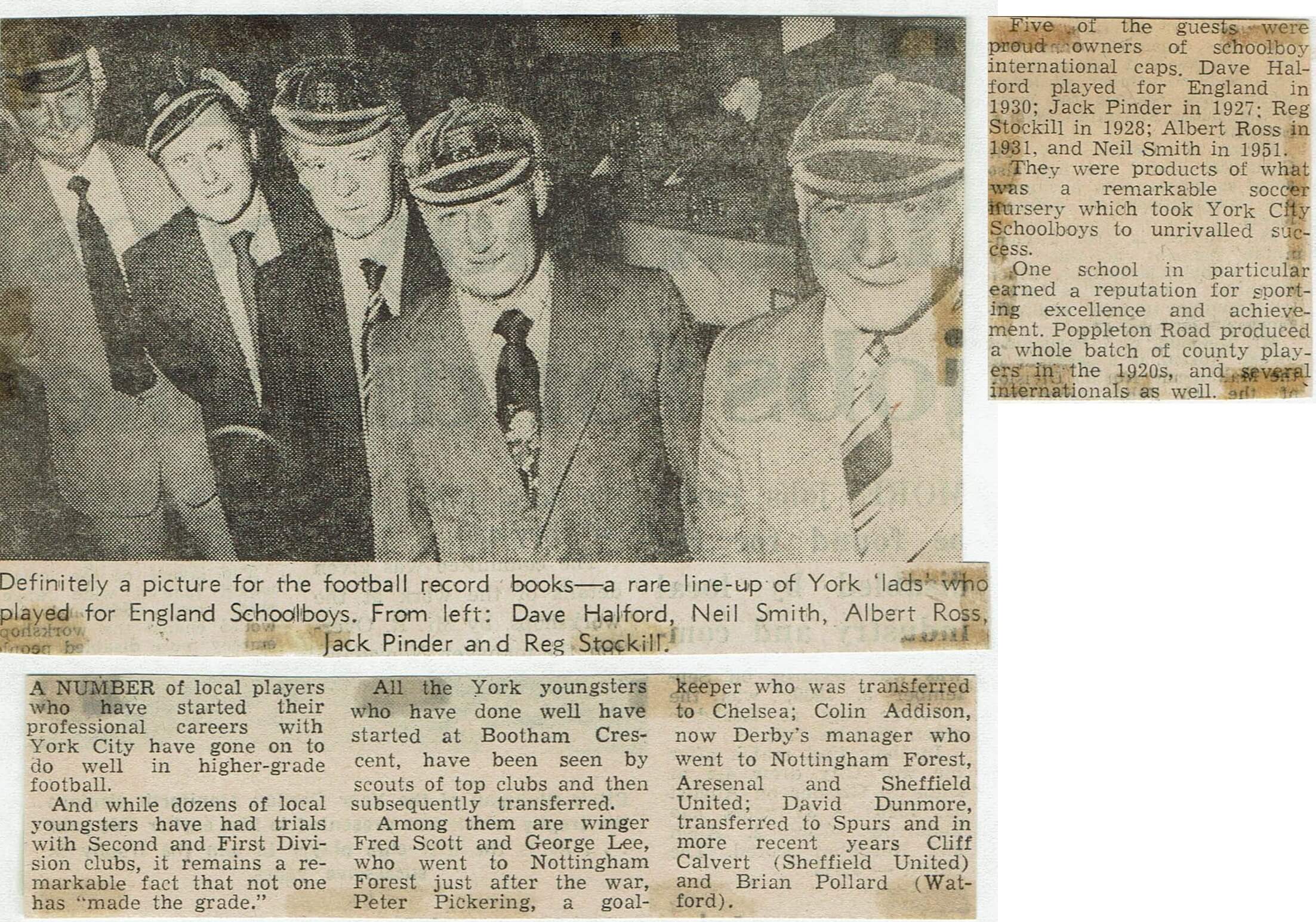
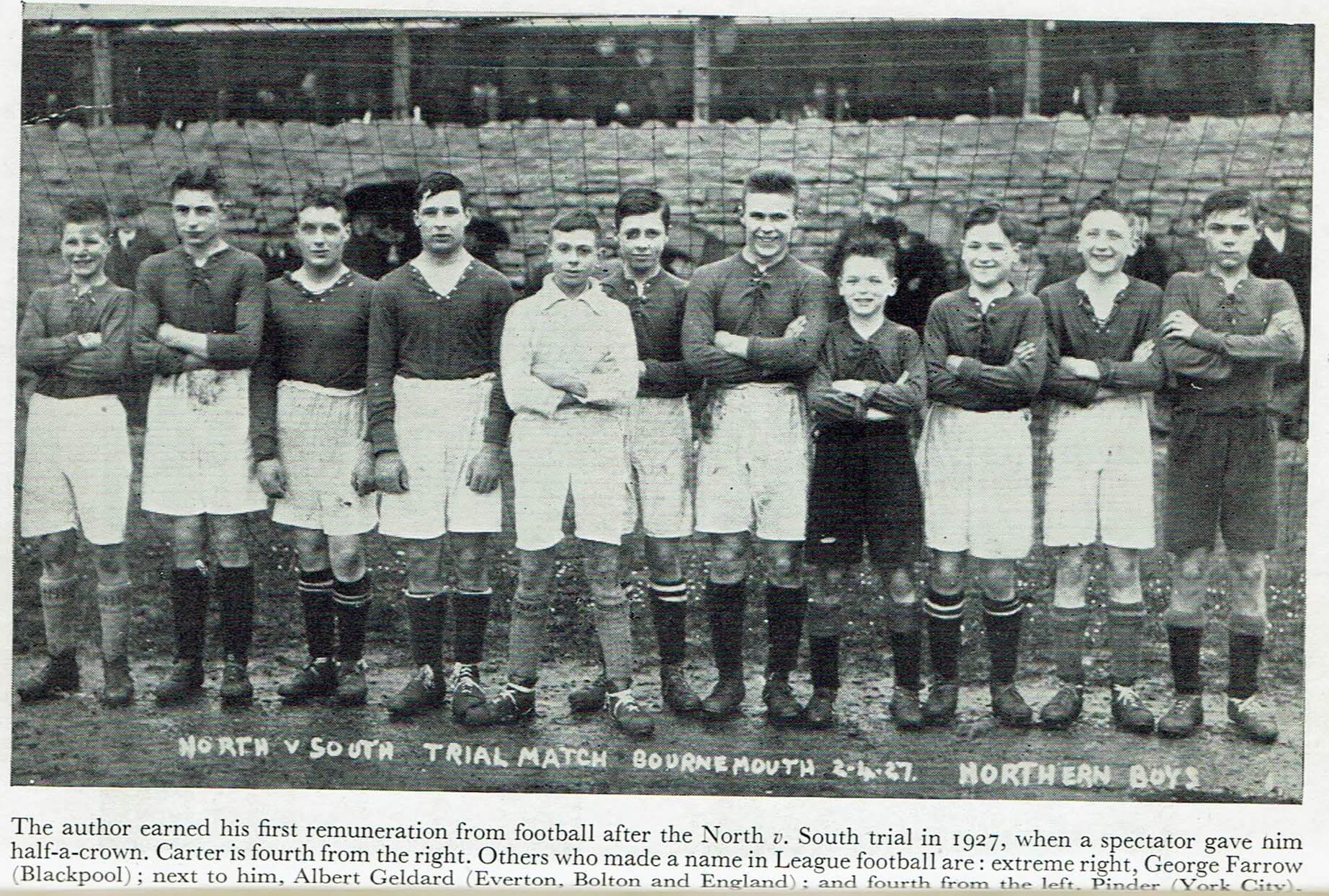
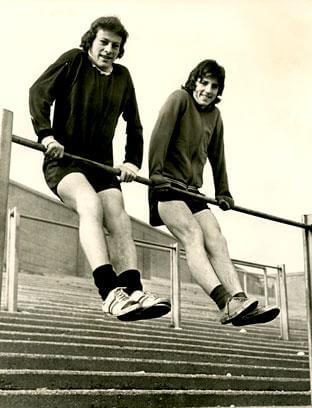
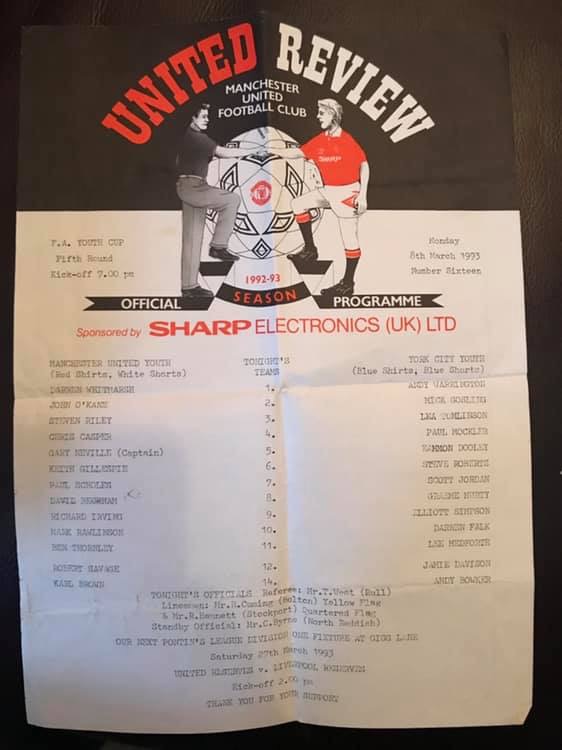
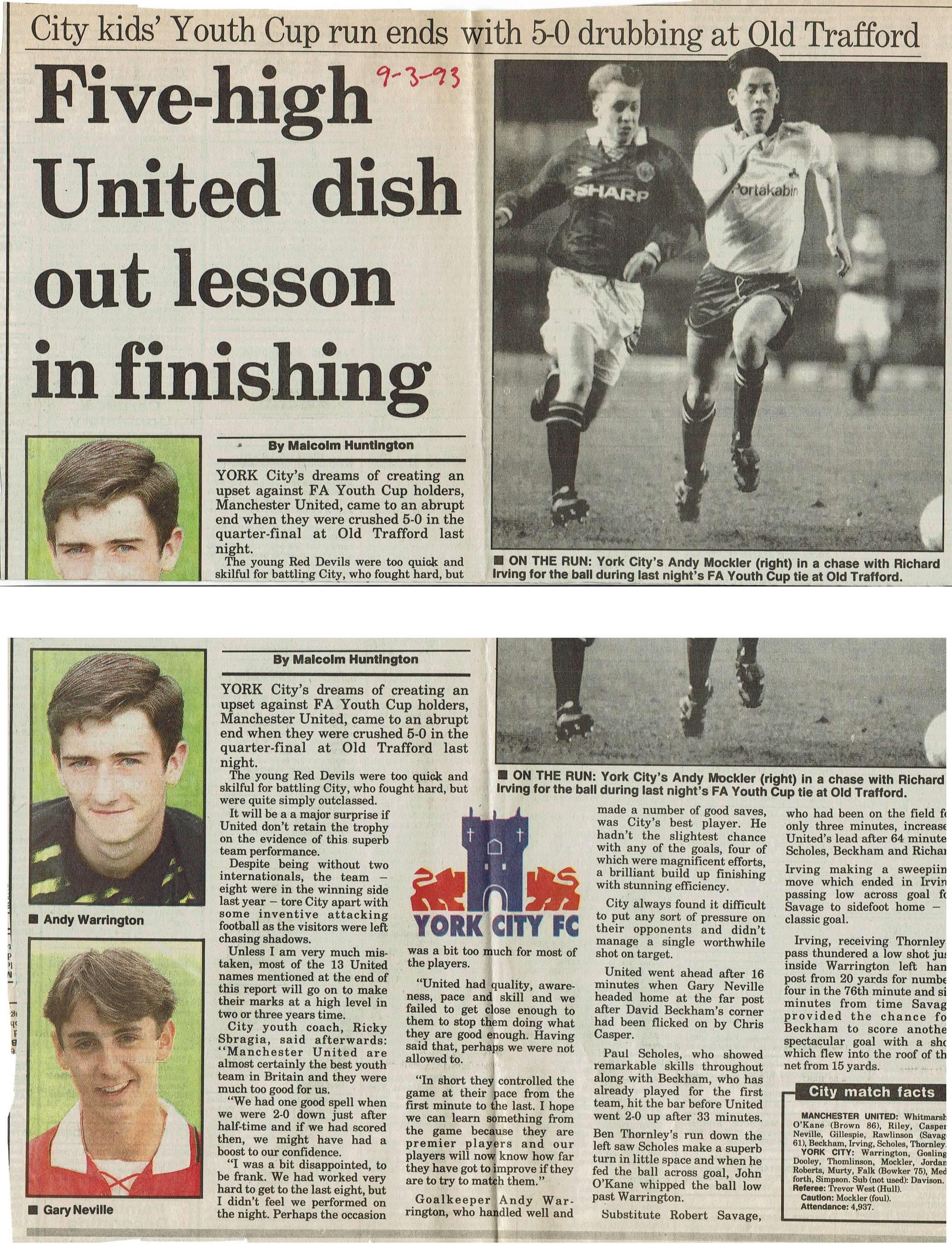
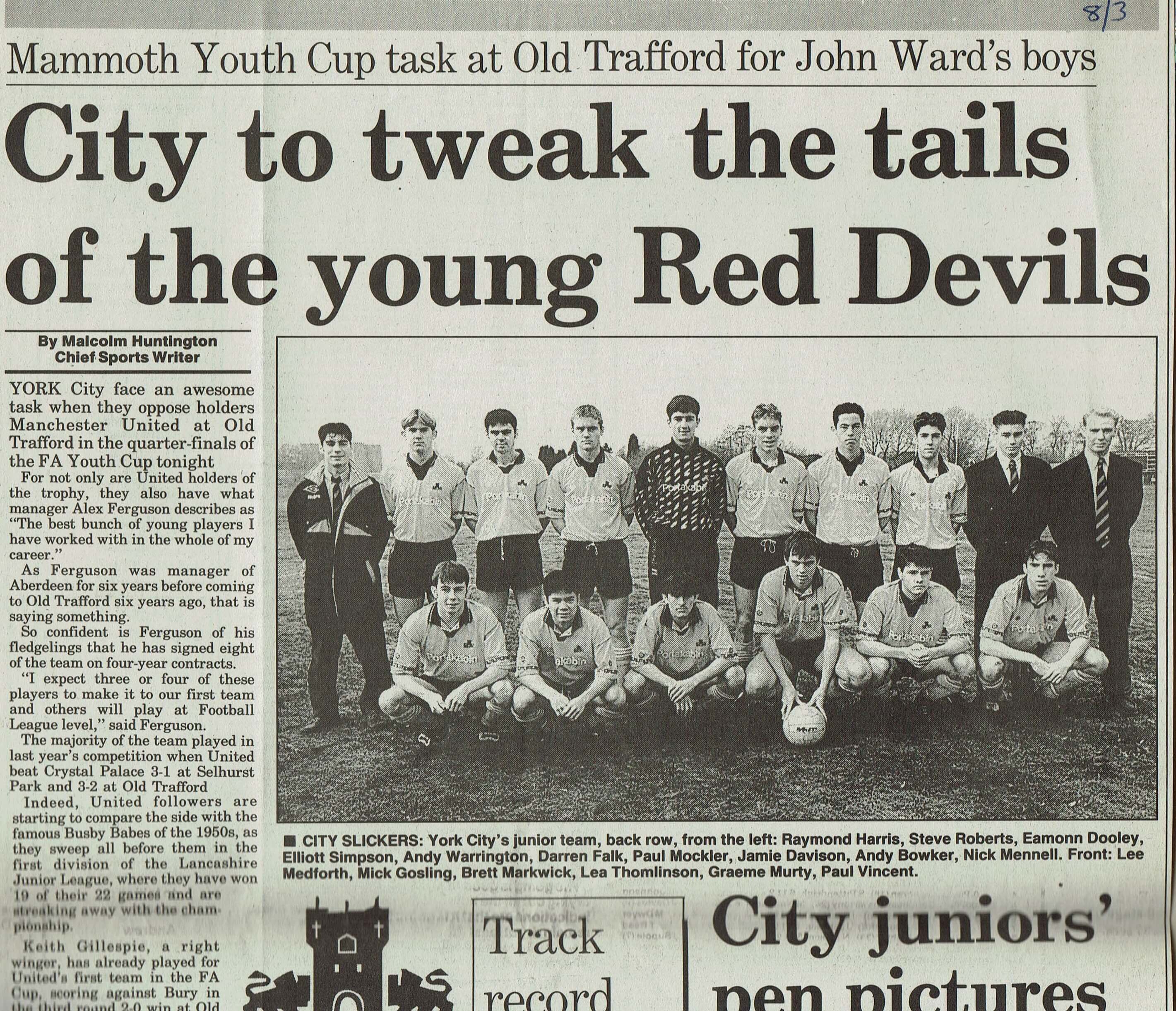
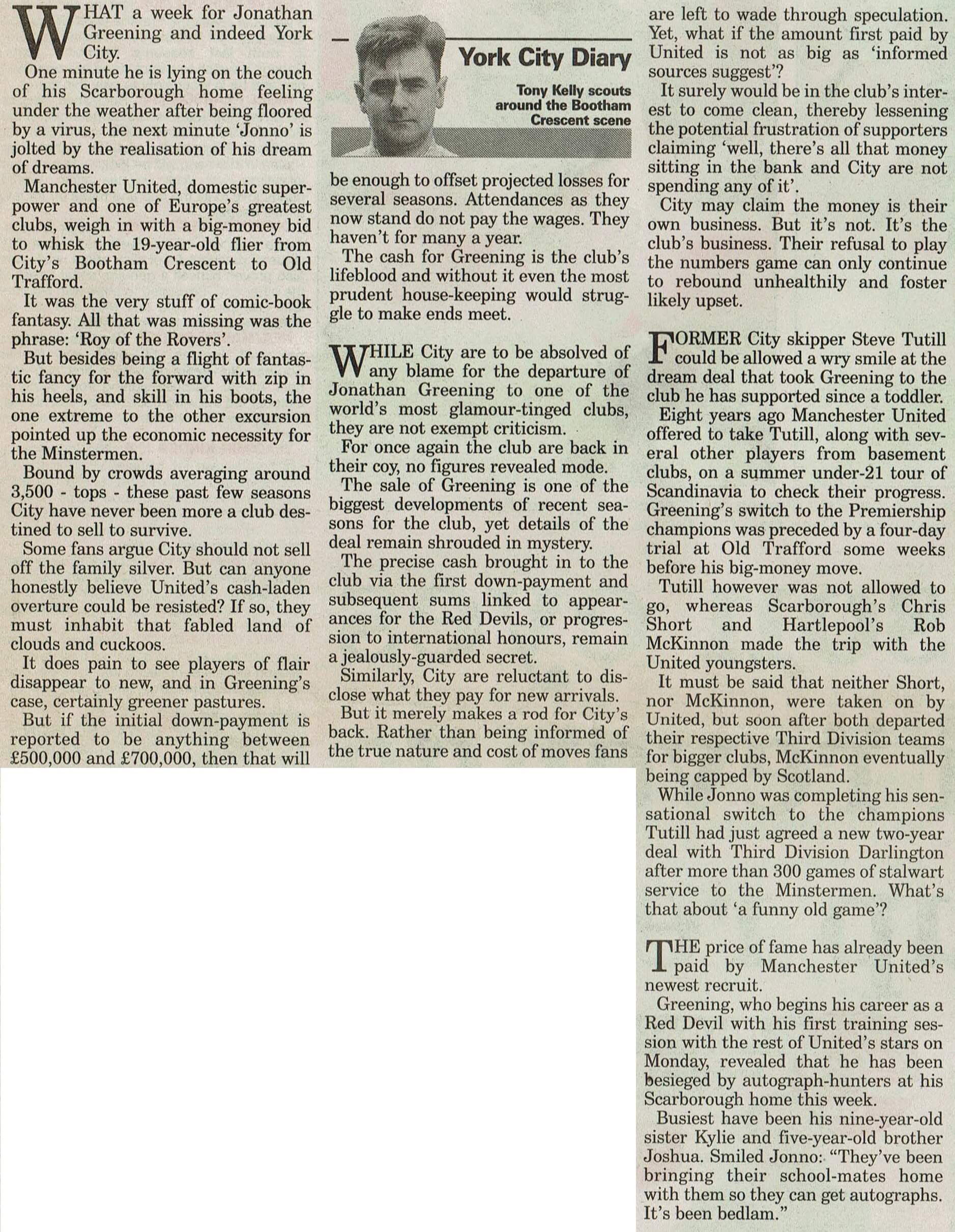
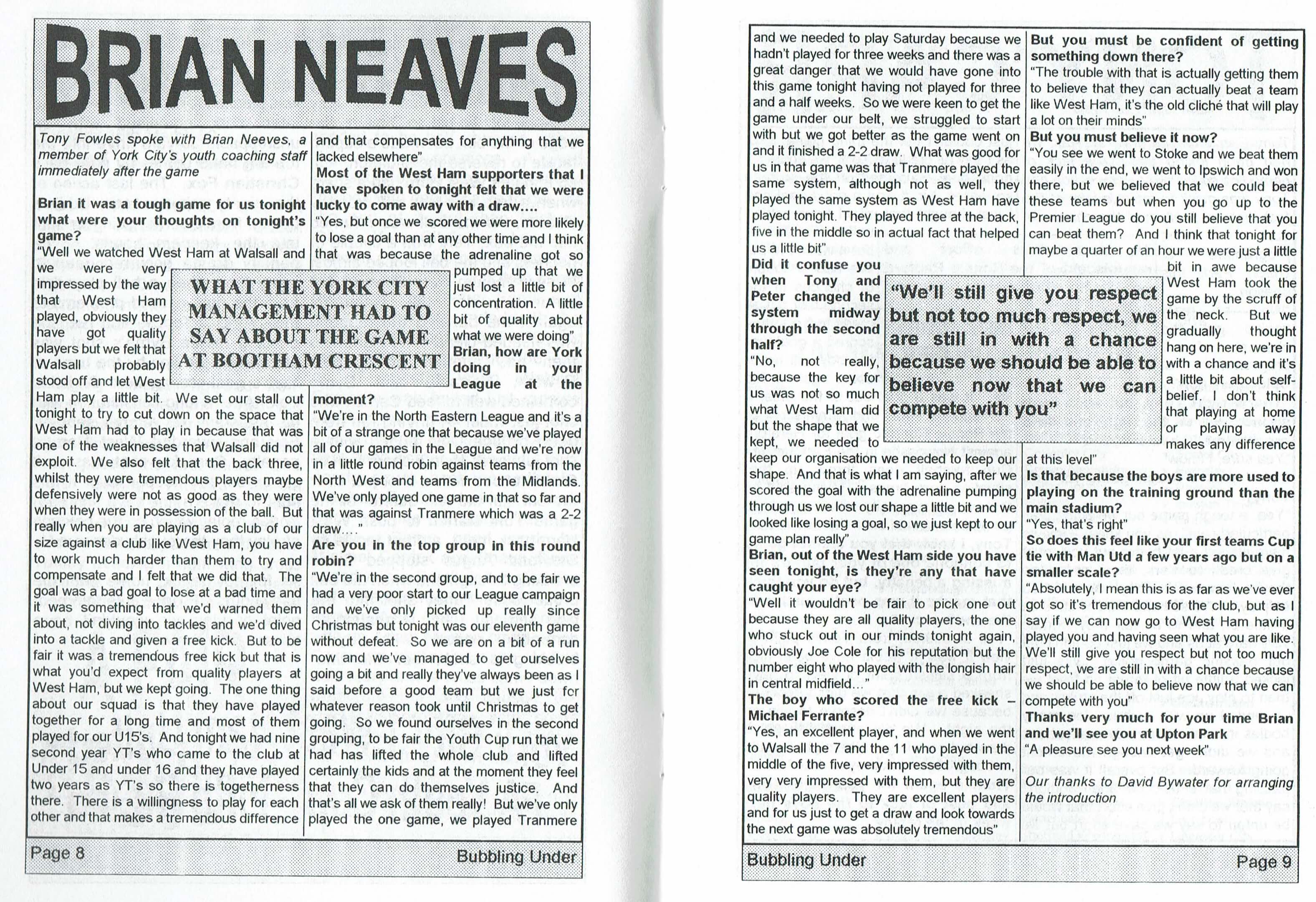
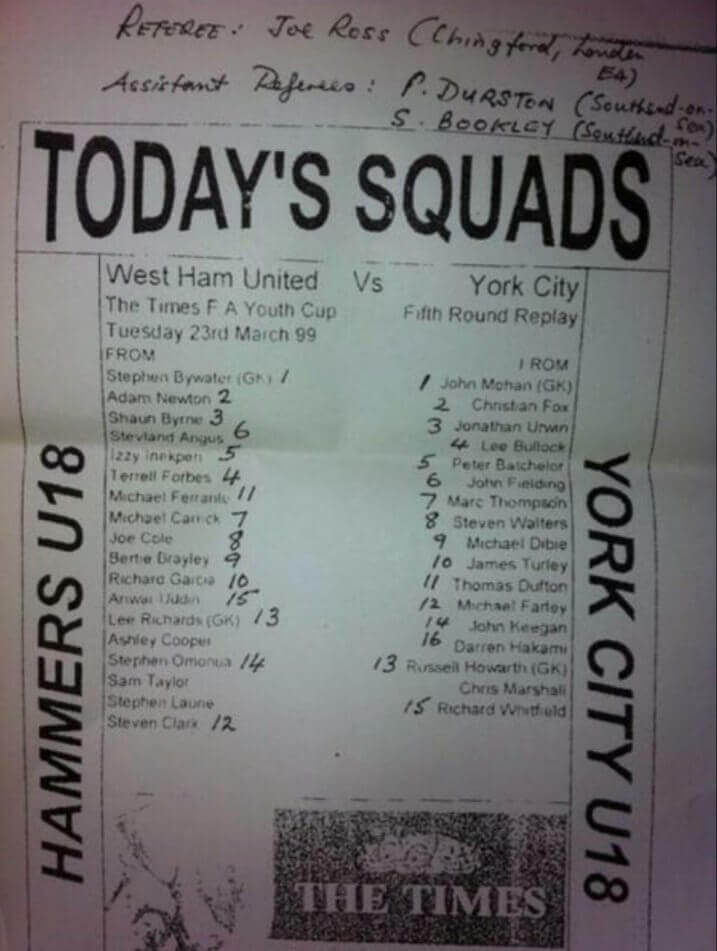
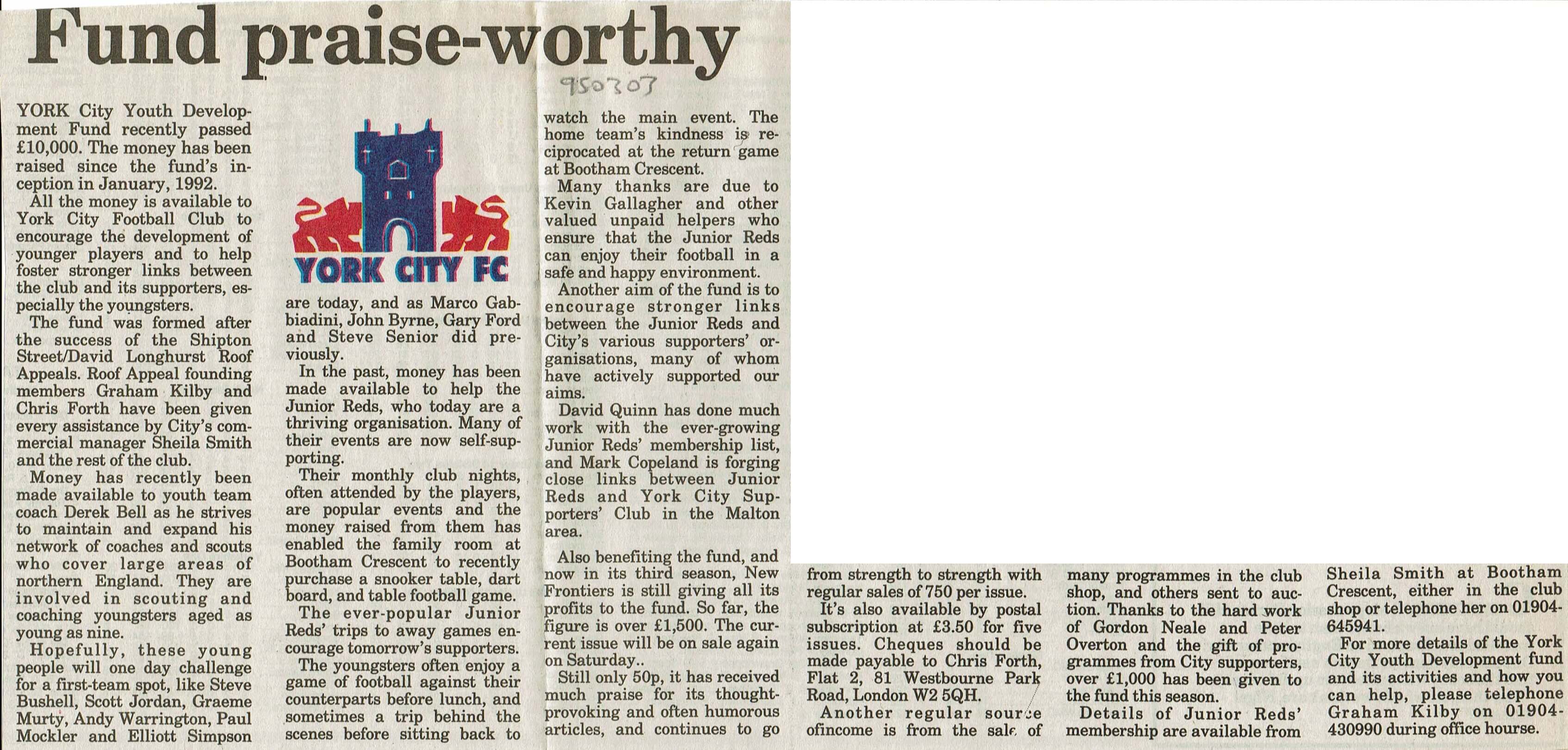
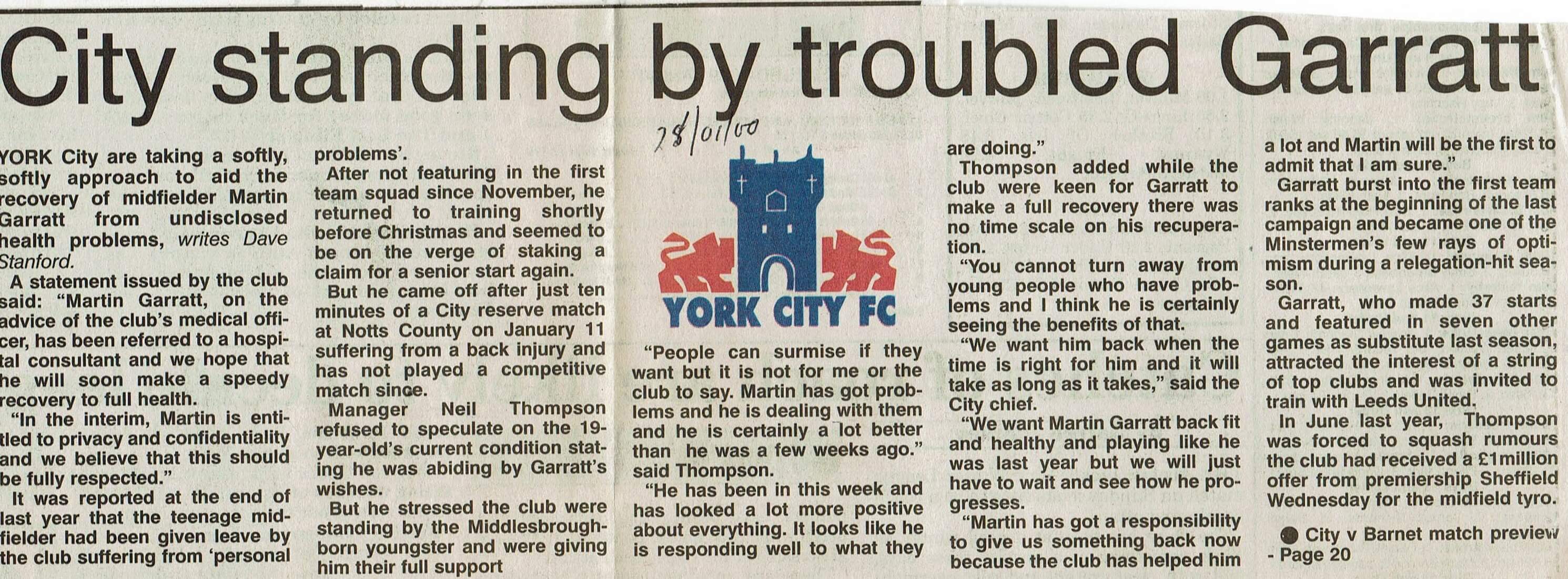
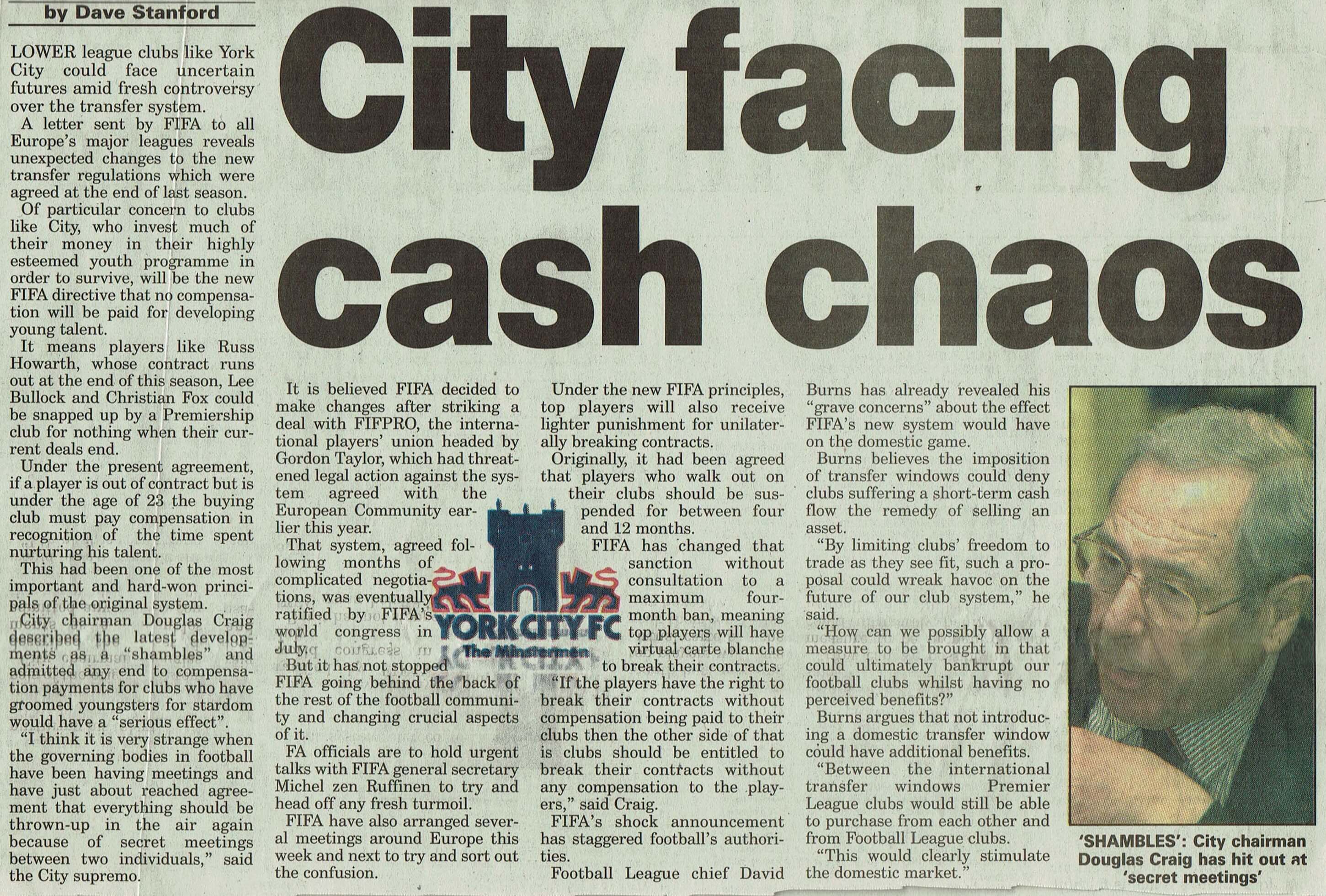
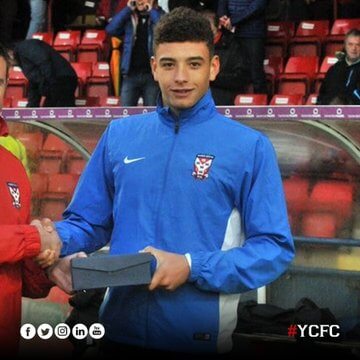
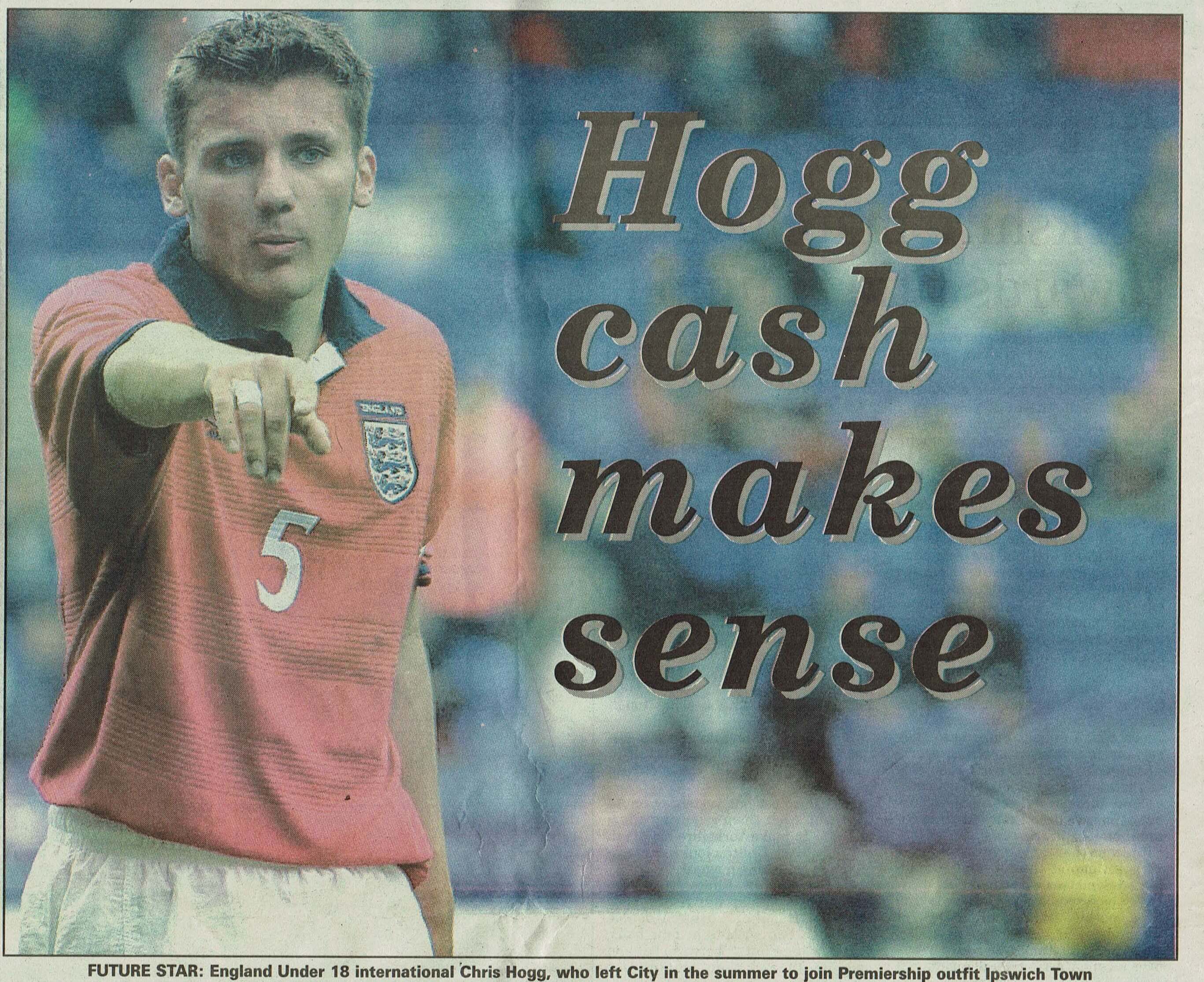
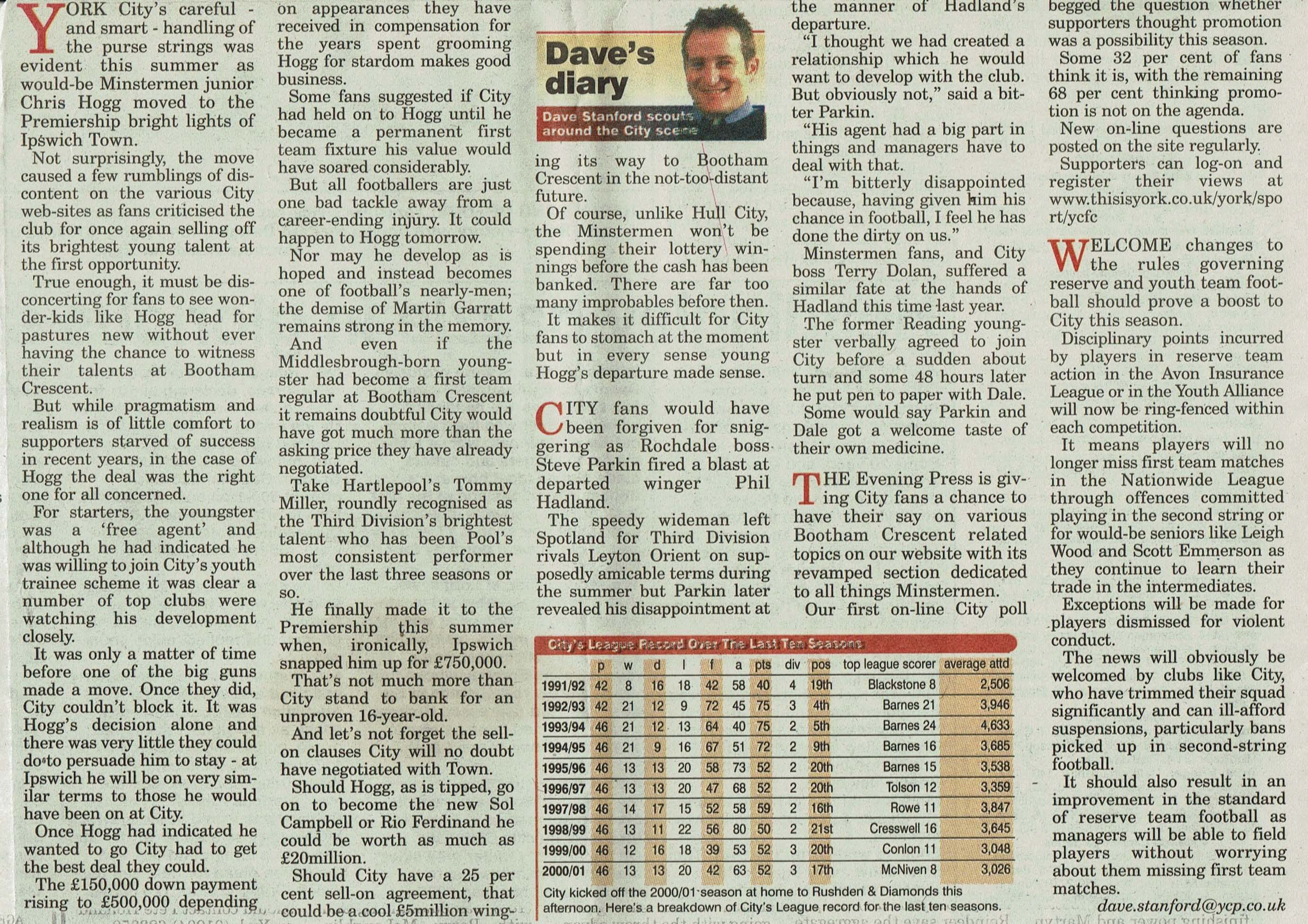
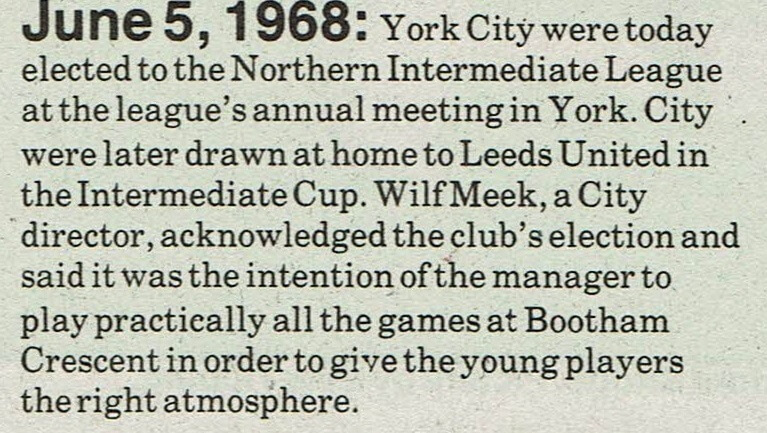 June 5,1968, City are elected to the Northern Intermediate League (and drawn at home to Leeds in the NIL Cup).
June 5,1968, City are elected to the Northern Intermediate League (and drawn at home to Leeds in the NIL Cup).
NIL was an 18 team league including the big 3 from the north east, Leeds and most of the other senior Yorkshire teams plus Grimsby, Chesterfield and Wolves (who ran a team based in Barnsley / Wath).
City finished 11th with home games at Bootham Crescent, usually on a on a Saturday afternoon and occassionally midweek under lights.
City's team formed and played their first game at Upton (March 68) with later games at Driffield (April 24) and Scarborough Juniors before the end of the 1967/8 season.
3 players (Chris Topping, Chris Dale and John Andrews) also played in the first team during the 68/9 season.
McKenna top scored
From 4 Oct 69 home games now played at Boroughbridge Road (Saturday 11:00 kick off)
McKenna top scorer again
Brian Pollard got on the score sheet for the first time.
City finish bottom
Young side struggle all season with Bobby Tasker finishing as top scorer with 12.
Cliff Calvert got on the score sheet for this first time.
(5+) wins
Pollard (top scorer in season he made his first team debut)
Lower mid table finish.
Goals very evenly spread with main contributions by Pollard, Evans, de Placido, Tasker and Hunter
Lower mid table
David Fenton (son of Billy) top score
740822 Ian Robb, Gordon Hunter & Bobby Hosker selected for The Rest to play the Sunderland, the champions
16th
Local lads David Fenton and Colin Teare top scored
Matches at York University Sports Ground
Bottom quarter finish
Colin Teare top score
details unknown
details unknown
Play Middlesbrough in 2 legged NIL Cup Final, result not mentioned, assume lost
details unknown
details unknown
Mick Astbury was the only pro, the rest were local amateurs
Lost 2-0 to Sunderland in Round 2 of The FA Youth Cup
Neil Smallwood, Nick Murphy and Andy Pybus attended England Under trials in February 1983 at the request of Bobby Robson
First appearances of Alan Pearce and Martin Butler
Lower mid table in 15 team league
Beat Rochdale and Billingham in FA Youth Cup before losing 2-0 v Liverpool in Round 3
Lose to Leeds in NIL Cup semi final
Home games at Clifton Hospital
Lose 1-2 to Sheffield United in Round 3 of The FA Youth Cup having beaten Oldham and Doncaster
Marco Gabbiadini top scored
Home games at York University
Lower mid table finish
City link with up Sheffield Redgates who act as a south Yorkshire nursery for City
In April 1987, City offered apprenticeships to Ashley Ward (the striker who played for Manchester City and in the top flight for Norwich, Derby, Barnsley, Blackburn and Bradford City) and Adrian Boothroyd (who went onto enjoy a lower league playing career and more high profile managerial success)
City include Warren McMillan, brother of Andy as a trialist
Struggle near foot of table all season
Youth scouting system extended to cover the Manchester area with the formation of the York City Youth Federation in summer 1988 resulting in an increased number of associated schoolboys joining from the north west
Ian Dunn (2 early season hat tricks), Ricardo Gabbiadini and Alan Dean main scorers
Home games at Oaklands
Top 6 finish, centre back Dave Spofforth recalls, "(we had a) chance of winning that (league) with 6 games to go, had to play Leeds and Newcastle had to beat them both. Went 2 up against Newcastle and drew and lost to Leeds 1-0. Great season against some top players".
Home games at Oaklands
Mid table finish 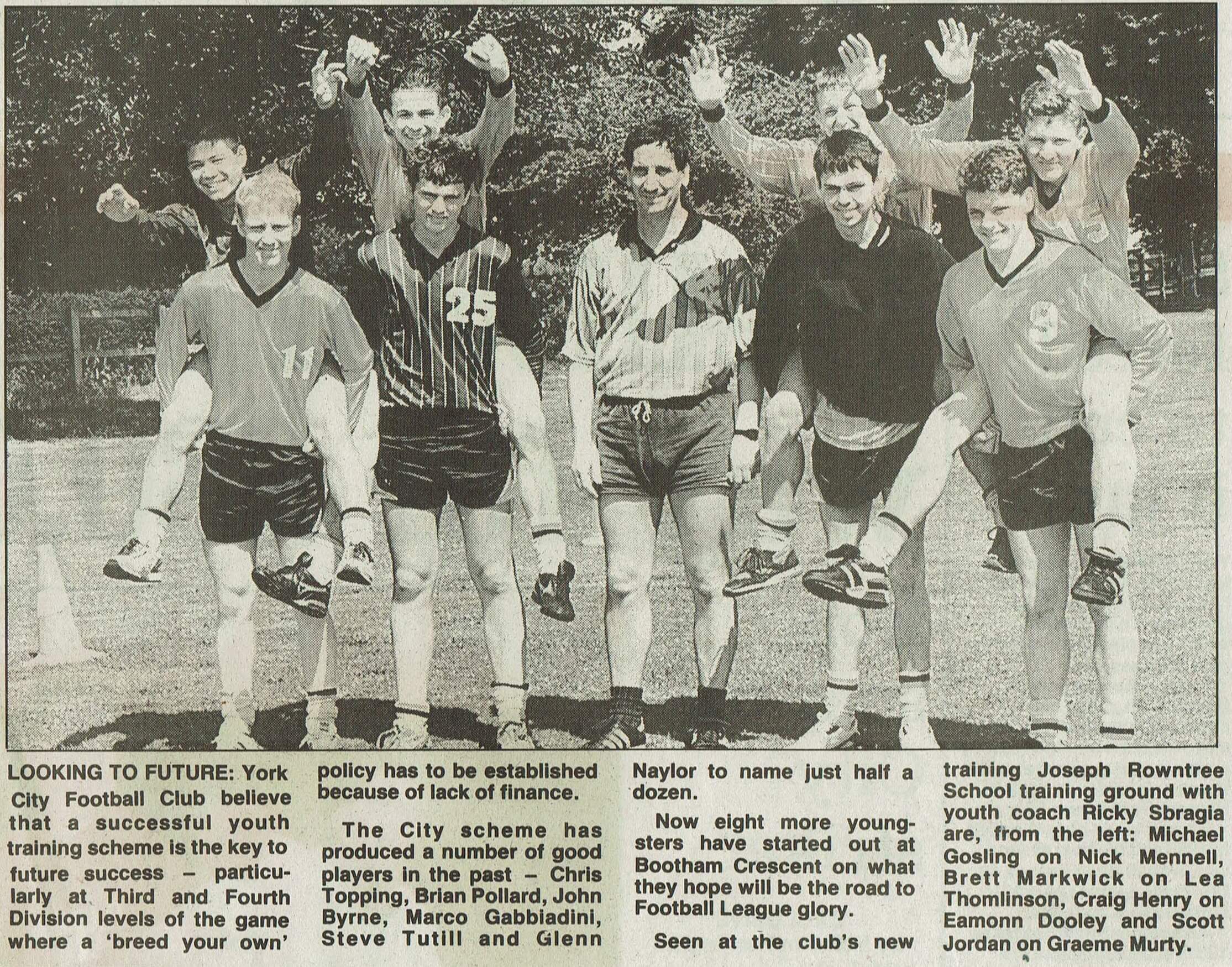
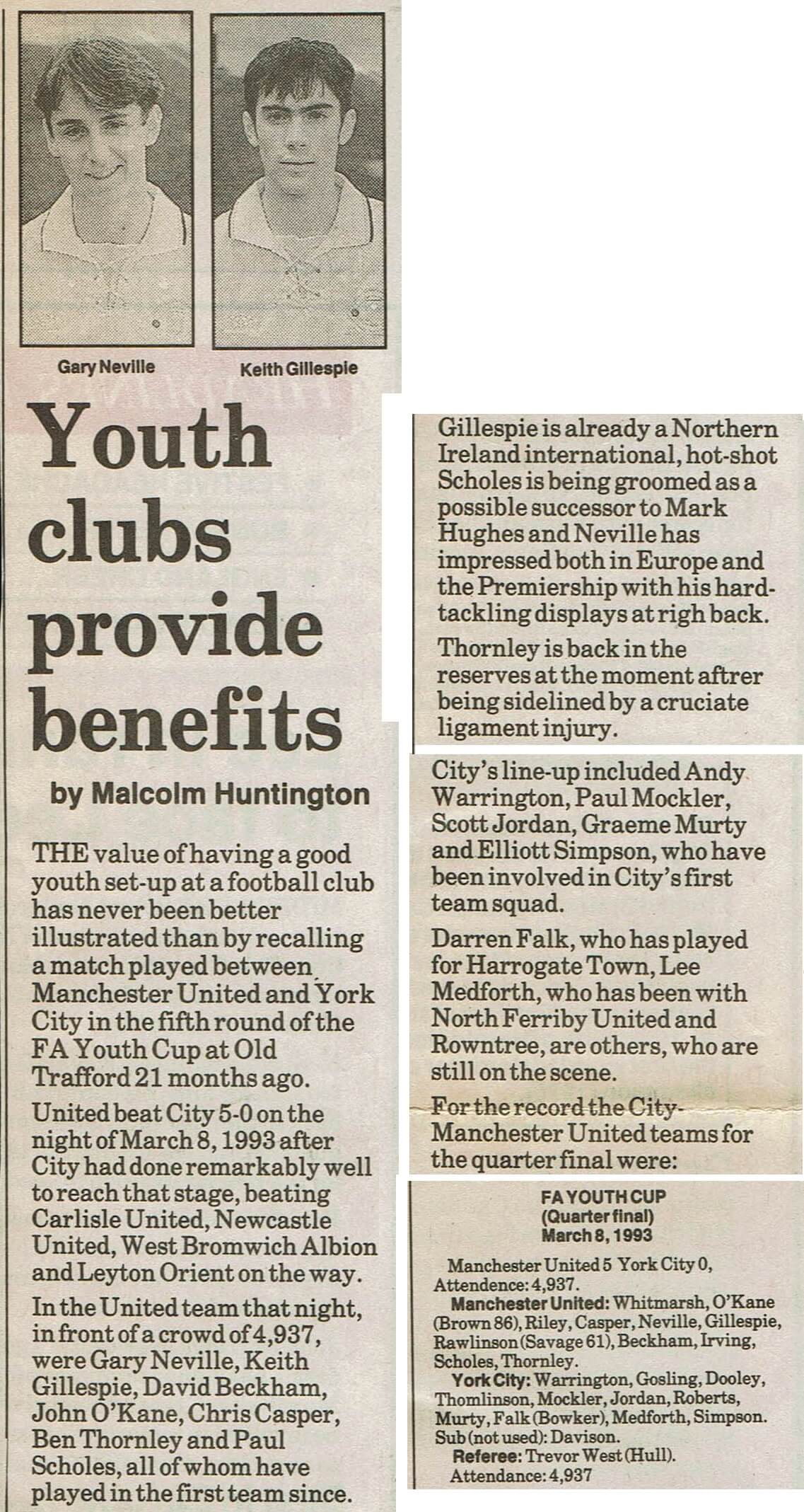 FA Youth Cup quarter finalists, City's best ever performance in the competition. Wins over Newcastle, West Bromwich Albion and Leyton Orient set up a quarter final at Old Trafford (8th March 1993) against Manchester United. The home side, boasting David Beckham, Paul Scholes, Gary Neville, Keith Gillespie, Robbie Savage, John O'Kane and others won 5-0 in front of 4,937. United lost in the final to Leeds. Of the City team, Graeme Murty, Scott Jordan, Andy Warrington and Elliott Simpson progressed to our first team. Ricky Sbragia coached City's side. Just below midway finish in 17 team NIL
FA Youth Cup quarter finalists, City's best ever performance in the competition. Wins over Newcastle, West Bromwich Albion and Leyton Orient set up a quarter final at Old Trafford (8th March 1993) against Manchester United. The home side, boasting David Beckham, Paul Scholes, Gary Neville, Keith Gillespie, Robbie Savage, John O'Kane and others won 5-0 in front of 4,937. United lost in the final to Leeds. Of the City team, Graeme Murty, Scott Jordan, Andy Warrington and Elliott Simpson progressed to our first team. Ricky Sbragia coached City's side. Just below midway finish in 17 team NIL
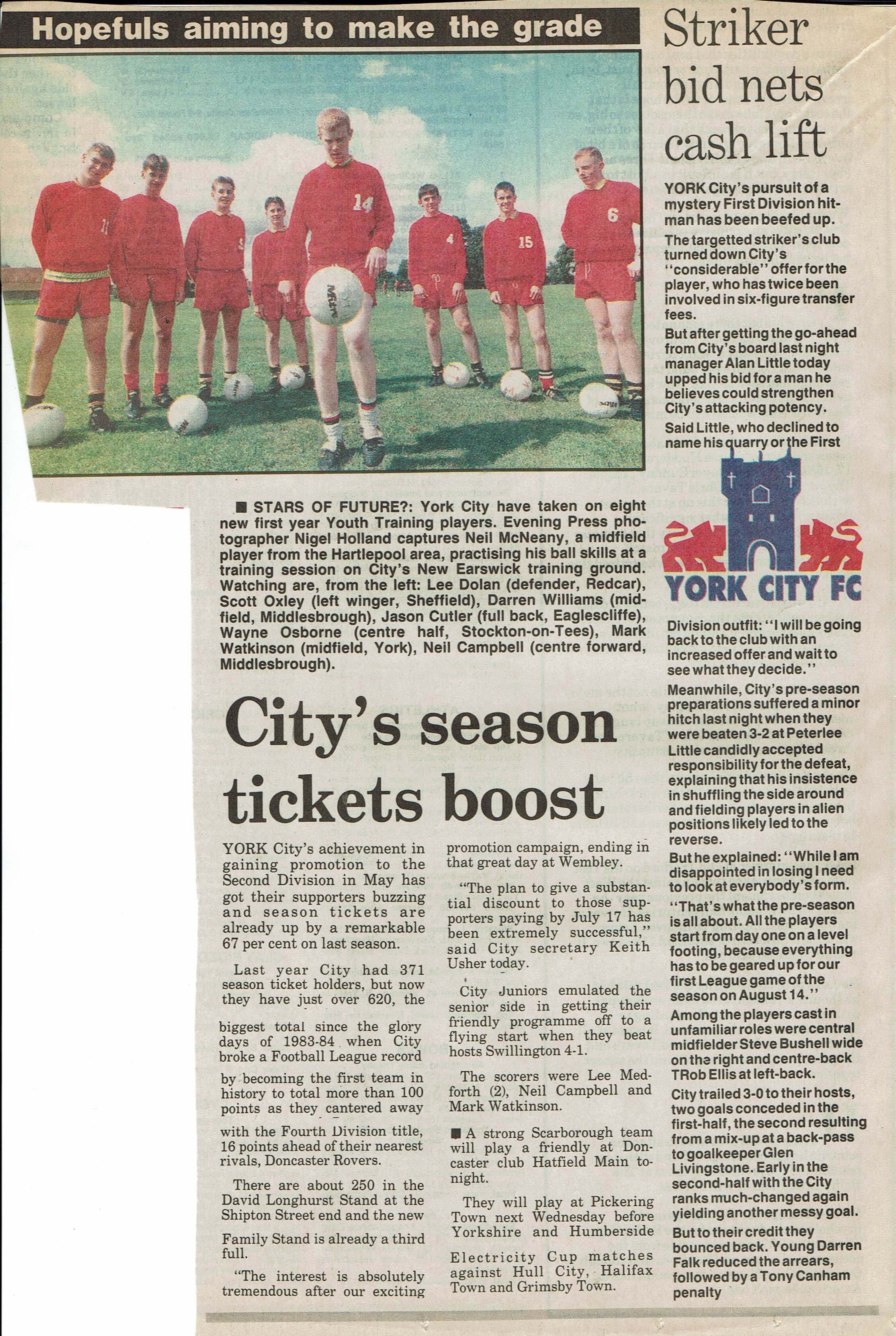 Second in the NIL having topped the table with one game to play
Second in the NIL having topped the table with one game to play 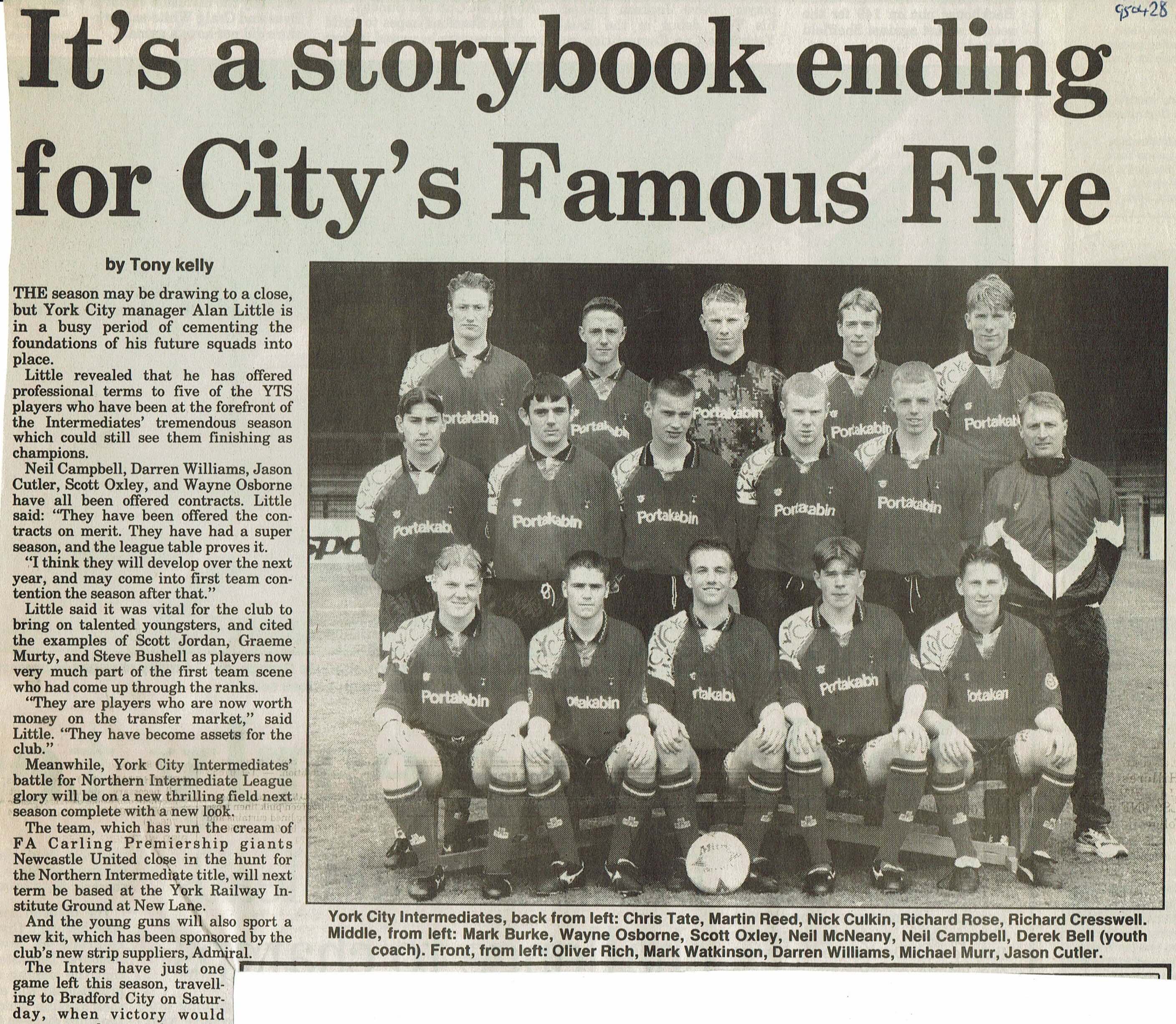 93/4 and 94/5 - successive 2nd places in Northern Intermediate League. 2nd season on goal difference, pipped by Newcastle.
93/4 and 94/5 - successive 2nd places in Northern Intermediate League. 2nd season on goal difference, pipped by Newcastle.
Matches at York University Sports Ground  City reach the last 16 (Round 5) of the FA Youth Cup with wins over Stoke (3-0 (Dibie (2) & Whitfield)) and Ipswich (City took a full size supporters' coach to the game before winning the replay (1-1, 2-0)). A near 1,000 crowd saw City draw 1-1 with West Ham in Round 5. Christian Fox scored an 86th minute equaliser with a 25 yard shot before being sent off in the last minute. From the subsequent penalty, City keeper, John Mohan, saved Michael Carrick's attempt to earn City a replay. City lost the replay 5-0 at Upton Park. West Ham fielded Michael Carrick, Joe Cole and Steve Bywaters who all enjoyed long professional careers. For City, Christian Fox and Lee Bullock enjoyed decent careers whilst Marc Thompson and James Turley played for City's first team. West Ham went on to win The FA Youth Cup that season beating Coventry 9-0 in the 2 legged final.
City reach the last 16 (Round 5) of the FA Youth Cup with wins over Stoke (3-0 (Dibie (2) & Whitfield)) and Ipswich (City took a full size supporters' coach to the game before winning the replay (1-1, 2-0)). A near 1,000 crowd saw City draw 1-1 with West Ham in Round 5. Christian Fox scored an 86th minute equaliser with a 25 yard shot before being sent off in the last minute. From the subsequent penalty, City keeper, John Mohan, saved Michael Carrick's attempt to earn City a replay. City lost the replay 5-0 at Upton Park. West Ham fielded Michael Carrick, Joe Cole and Steve Bywaters who all enjoyed long professional careers. For City, Christian Fox and Lee Bullock enjoyed decent careers whilst Marc Thompson and James Turley played for City's first team. West Ham went on to win The FA Youth Cup that season beating Coventry 9-0 in the 2 legged final.
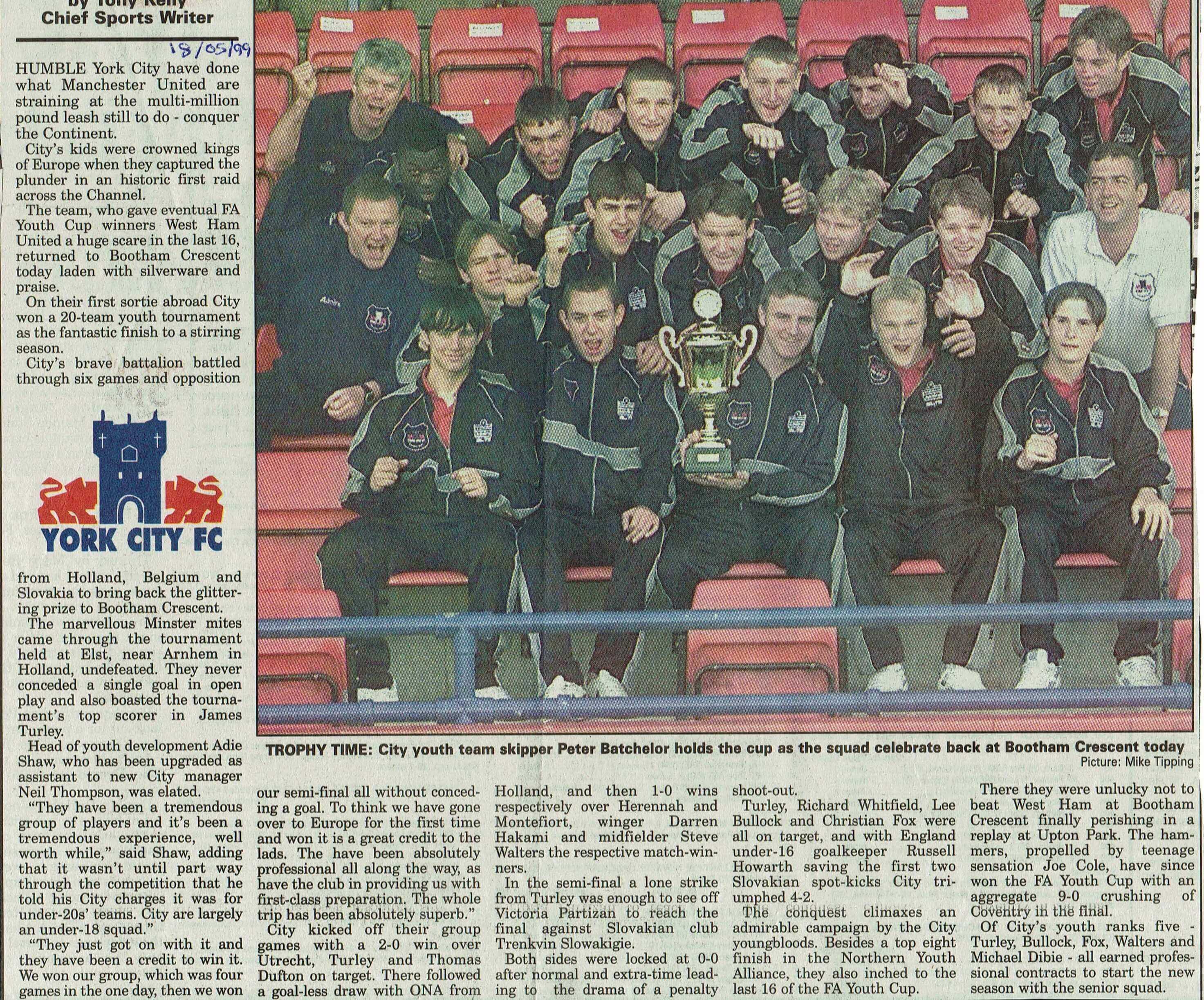 In May 1999, City's Inter team won a prestigious competition in Holland.
In May 1999, City's Inter team won a prestigious competition in Holland.
Edmondson was top scorer. City bowed out of The FA Youth Cup in Round 1 losing away to FC Halifax on penalties. It wasn't until 2022 that City progressed as far again
McNaughton, Harry Thompson, and goalkeeper Ryan Whitley were the only second year scholars involved in the game. Midfielder Alfie Evans, only 15, came on as a substitute for City in the final 20 minutes of the game.
8/May - Final game of the season. Chesterfield settled the contest with a goal in the closing stages. C 3 YC 2
City had lost their penultimate game of the season three days earlier 3-0 against Grimsby Town.